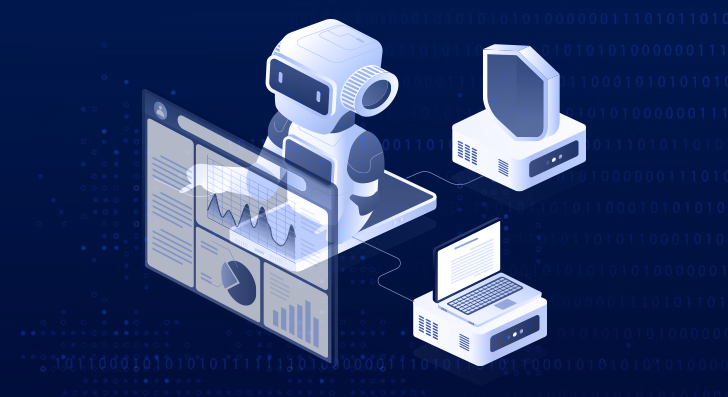Data is everywhere (quite literally) and comes in a variety of formats. It is stored in your filing cabinets, buzzing over your smartphone, waiting to be stored in the mailroom, and lingering in your inbox. All this overwhelming amount of data being created is a lot for businesses to be managed effectively. An even bigger challenging aspect is to pool and process this data while managing other core business competencies.
One such solution that has gained significant traction is infusing automation into the data collection and capture processes. This paradigm shift in data acquisition is reshaping industries across the board, offering unprecedented efficiency, accuracy, and scalability.
Essence of Automated Data Collection
The process of gathering and recording data from various sources with minimal human intervention is known as automated data collection. In this, advanced technologies such as IoT devices, sensors, barcode scanners, and RFID systems are leveraged to extract data in real-time or at predetermined intervals. This collated data is then processed, organized, and made readily available for analysis, significantly decreasing the time and effort required for data collection and entry. It proves to be a versatile solution that applies to all industries.
Power of Data Transformation
There’s another pivotal concept intertwined with automatic data collection, which is data transformation. RPA, AI, and ML combined with human expertise are leveraged to transform raw and unstructured data into a structured and well-organized format that is suitable for analysis, reporting, and decision-making.
Also known as smart data transformation, it bridges the gap between data collection and meaningful insights, making it an integral part of the data lifecycle. In a nutshell, automated data collection and data transformation work hand in hand to provide organizations with a holistic solution for effective data management.
Transforming Data into Value
-
Uplifted Accuracy
As there’s minimal to no human intervention, leveraging the power of automation in processes like data collection and capture significantly reduces the likelihood of human errors. Resulting in more accurate and reliable data—this is especially crucial in industries where precision is paramount.
-
Time Efficiency
Offloading redundant and time-consuming manual data entry tasks to automation is a fail-proof way to enhance efficiency. This not only increases the cognitive bandwidth of employees, but also allows them to focus on more strategic activities. This boosts overall productivity and reduces operational costs.
-
Real-time Insights
The ability to pool and process data in real-time provides organizations with immediate insights into their operations. This agility is essential for making timely decisions, responding to market changes promptly, and maintaining a competitive advantage in the industry.
-
Scalability
Automated data capture solutions are highly scalable in nature. As your business grows and evolves, these systems can easily adapt to handle larger volumes of data without significant infrastructure investments.
-
Cost Optimization
While there is an initial investment in implementing Automated Data Collection, the long-term cost savings in terms of reduced labor and improved operational efficiency are substantial.
Use Cases Across Industries
-
Retail
Retailers around the world are turning to this versatile solution to boost their chances of business growth, track inventory levels, monitor customer behavior, and optimize supply chain operations. For instance, retailers can use data to estimate staffing needs for peak shopping periods, determine which marketing campaign generates the most sales, and figure out what stock they’ll need ahead of time.
-
Manufacturing
In manufacturing, automated data collection enhances quality control, tracks machine performance, and ensures compliance with industry standards. In addition, infusing automation can help manufacturers with bill of material (BOM), inventory management, supply chain management, and so on.
-
Healthcare
Healthcare providers use automatic data collection for patient records, inventory management, and monitoring vital signs in real-time. By incorporating technologies like RPA, AI, and ML for data transformation, healthcare providers can streamline their data management process, optimize costs, and improve patient outcomes.
-
Logistics and Transportation
The logistics sector benefits from automated data collection by optimizing routes, monitoring vehicle conditions and ensuring the timely delivery of goods. The need for human intervention is minimized to a great extent and businesses can save a great deal on costs.
-
Finance
Financial institutions automate their data ingestion and data extraction processes to be able to manage large volumes of data accurately and efficiently. This instant access to quality data facilitates fraud detection, risk assessment, and customer profiling.
Trends Governing Automated Data Collection
1. Mobile Data Collection
With the proliferation of smartphones and tablets, mobile data collection apps have gained popularity. These apps allow field workers to collect data on the go, eliminating the need for paper-based forms and manual data entry.
2. IoT Integration
The Internet of Things (IoT) continues to drive innovation in automated data collection. IoT devices, equipped with sensors, are seamlessly integrated into various industries, enabling real-time data acquisition. This trend not only enhances data accuracy but also facilitates predictive analytics.
3. Machine Learning and AI
Machine Learning algorithms and Artificial Intelligence play a pivotal role in automated data collection. They are used to recognize patterns, anomalies, and trends in the data, automating decision-making processes and reducing human intervention even further.
4. Data Security
As the importance of data grows, so does the concern for data security. Advanced encryption and security protocols are being integrated into automatic data collection solutions to safeguard sensitive information.
Final Words
Automated data capture solutions, in conjunction with data transformation, is ushering in a new era of efficiency and data-driven decision-making. Thus, incorporating these versatile solutions into your organization’s strategy is no longer a luxury but a necessity in today’s data-centric world.
The latest trends in this field, including IoT integration and Artificial Intelligence, are propelling businesses toward a more streamlined and insightful future. The benefits are undeniable, from enhanced accuracy and time efficiency to real-time insights and scalability. In essence, embracing this technology will undoubtedly empower your business to thrive in a highly competitive landscape.
Read the original blog: https://www.damcogroup.com/blogs/going-beyond-automation-what-is-next-for-data-collection-companies






